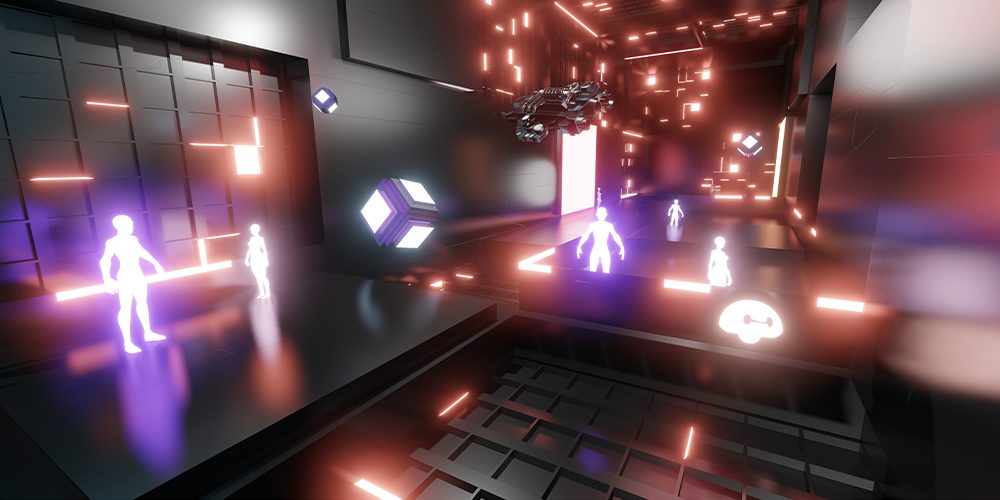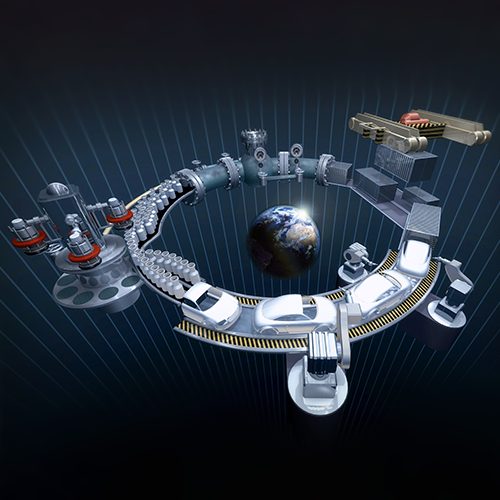DTaaS, zBlog
Digital Twin
trantorindia | Updated: April 20, 2022

Why would enterprises invest to create a digital version of something that physically exists in the real world? The Digital Twin and Metaverse are the hot topics of discussion in technology circles and a growing number of consumers are getting on board. This article explains how these two areas would intertwine and enhance user experiences. Let me start with:
Digital Twin
Imagine that you had a digital copy of the physical world: a digital twin. This twin would enable you to collaborate virtually, simulate real-life conditions, understand what-if scenarios, predict results, and give instructions to manipulate the physical world. Let’s look at an example in the healthcare industry, digital twins of a patient or organs allow surgeons and health professionals to practice procedures in a simulated environment rather than on a real patient. Sensors the size of bandages can monitor patients and produce digital models that can be monitored by AI and used to improve care.
Today, many companies are using digital twin capabilities in many ways. In the aviation and automotive industries, they are becoming essential tools for optimizing the manufacturing process. In healthcare, cardiovascular researchers are creating digital twins of the human heart for clinical diagnoses, education, and training. In Singapore, the government is building a smart city by utilizing the digital twin in urban planning, maintenance, and disaster recovery. Retailers are creating digital twins of customer personas to improve the customer experience they deliver. For example, retailers can provide ideal fashion clothing products to customers based on their digital twin models.
Digital twins can simulate any aspect of a physical object, people, or process. The simulation captures how the equipment operates, how engineers maintain it, or even how the customers would relate to it. Think about building a new home for your family and adding customized furniture based on personal preferences. A digital twin of the model home could help with the designing process and provide a virtual walk-through with a view of objects in your bedroom, living room, etc.
According to a Deloitte study, the global market for digital twins is expected to grow with a 38% CAGR to reach $38.5 billion by 2025.
Digital twin capabilities with human-computer interfaces such as augmented reality, these help engineers identify potential manufacturability, quality, and durability issues – all before the designs are finalized. Beyond design, digital twins help companies perform predictive maintenance of products and machinery in the field. Sensors embedded in the machines feed performance data into a digital twin in real-time to generate malfunction alerts and schedule maintenance. These capabilities are helping the manufacturers optimize their process while keeping the costs low and are helping the customers improve their experience pre & post-purchase.
Metaverse
And now let’s dive into the metaverse. It is a form of digital interaction where connected, virtual experiences simulate those of the physical world.
Technology, media, and telecommunications companies are investing in metaverse with gaming, social media, and entertainment applications. Many consumers, brands, and creators are engaging in a variety of ways to produce concerts on gaming platforms and sell branded digital goods in virtual worlds. Many people are personalizing their “avatars,” or their digital personas, and they are buying and selling virtual real estate and art.
People are spending more time engaging with digital systems and socializing in digital spaces, they are beginning to see their virtual lives as equivalent to their physical lives. Think of Gen X, Gen Z, and millennials who were raised on the internet and 3D gaming. The pandemic may have helped further accelerate a movement to virtual worlds by giving people an environment they may find preferable to the limitations of phone calls and videoconferencing.
On the other hand, enterprises are also leveraging virtual worlds. Digital twins of physical environments can be made hyper-realistic and physically accurate. Digital twins can simulate any aspect of a physical object, people, or process as we discussed earlier in this article. Humans, robots, and AI agents can work together inside these digital twins to plan, design, and test – accelerating innovation and planning cycles for a variety of business needs. Virtual meetings or events can replace or augment traditional, in-person environments. Colleagues can connect from anywhere in large or small groups to meet and collaborate.
Metaverse-focused companies raised $10.4 billion across venture capital deals in 2021. A recent Bloomberg analysis estimates global metaverse revenue opportunities could approach $800 billion in 2024. For example, in today’s world, customers will be able to take a 3D virtual hotel tour and research the location of the hotel where they are considering staying using VR platforms and hardware. Before booking a hotel room, travelers can put on their 3D digital avatars and take a virtual tour of the facility.
Established technology companies, independent creators, and startups are building metaverse platforms where users can experience the metaverse. A variety of consumer and enterprise hardware and devices will be required to support the metaverse. Devices such as headsets, gloves, smart jewelry, improved cameras, sensors, and batteries will see increasing demands within the retail industry In the coming few years, the metaverse has the potential to evolve the traditional business in many ways such as Virtual Working & Collaboration Environments, Digital Twins to emulate manufacturing and logistics processes within the metaverse, Online Education & Training combined with avatars, Consumer Shopping in a virtual world, Virtual Healthcare & Wellbeing to recreate the in-person experience. Whatever the ultimate trajectory of the metaverse, it’s clear that technology is evolving rapidly to make virtual interactions more immersive, more diverse, and more innovative. Interesting times ahead.



